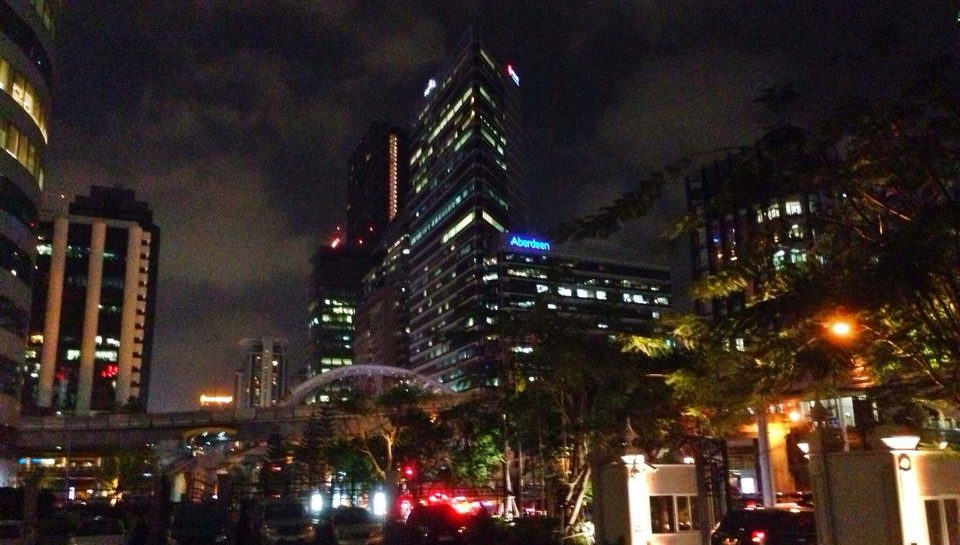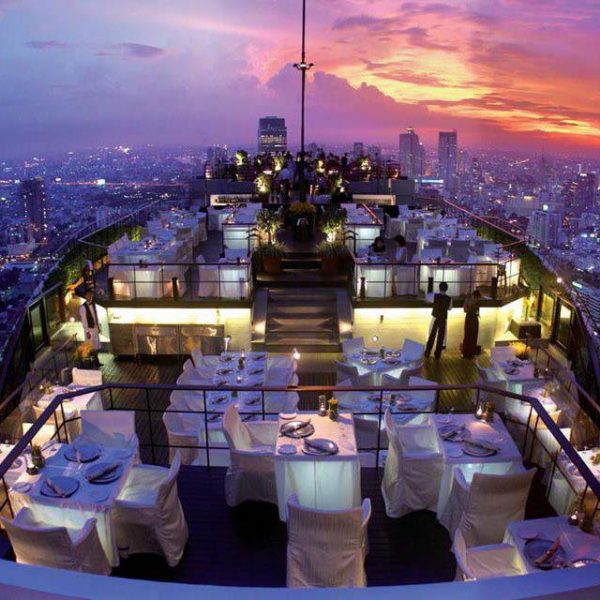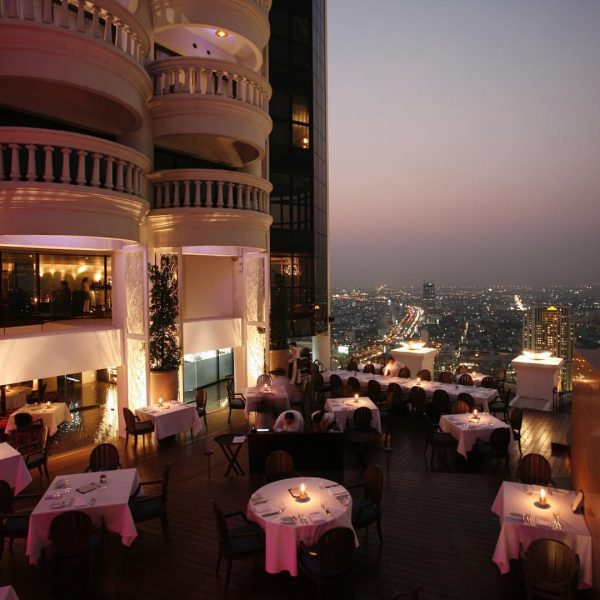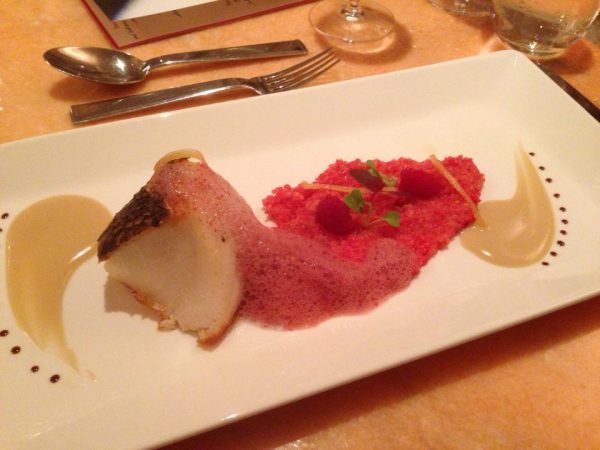
Sawasdee, Bangkok is joy.
Contributed by reporter Jens Hoffmann

The CEO Deepak Ohri took a unique approach to the service sector which taps into a deeper level of exchange with guests by creating emotional connections.

The Dome at lebua is an impressive collection of iconic restaurants atop lebua’s Bangkok properties, with view is breathtaking.
In the restaurants you can enjoy cuisine that attracts epicures from around the world:
Sirocco, Breeze, two-Michelin-star Mezzaluna, Sky, Flute, Alfresco 64, lebua No. 3, Pink, and Chef’s Table.
We tried the Mezzaluna.
Started with Dom Perignon.

Its always a great start.
The amuse outlines Kawasaki-san’s culinary approach: Nishin, a lightly pickled Saba-style herring, is thinly sliced and supplemented with the selective acidity of white wine vinegar and capers.
In another bowl there is “Kuruma Ebi”, the Japanese tiger prawn, with a chawanmushi-like porcini sauce and chestnut, much more intense and autumnal, while the precisely seasoned guinea fowl mousse with mushroom duxelles and sansho peppercorn leaves is sandwiched between two wafer-thin crispy slices of tramezzino seem like a snack reduced to the essentials.
Despite all the meticulousness, it all tastes wonderfully uncerebral.
“Bafun Uni” and shrimp jelly with avocado, caviar and shiso open the actual menu. This is strongly reminiscent of the Japanese-Peruvian “Nikkei” cuisine: A sour, extremely light avocado cream provides the bed for the creamy sea urchin, which shows off its typical sweet-bitter quality, before the caviar with salt, texture and Iodine rounds it off. A great, surprisingly fresh start thanks to the guacamole.

For the next course I choose marinated shrimp.
The “Shima Ebi” shrimp with pear, yuzu and lemongrass sounds like a course that you can only get on the table in Japan – assuming the product is of exceptional quality.
A delicate bite, a slight sweetness and lots of late nuttiness and iodiness; In addition, the animals were warmed up: These few bites alone make it clear to me how worth it is to look at a product in its entirety: the basic quality, processing, size, seasoning – and also the temperature.
The companions provide creamy support, whereby lemongrass and yuzu do not overwhelm each other, but are undoubtedly sweet and sour dosed carefully.
The taste of yuzu in particular has been included in almost every German menu in recent years – here the kitchen shows how to do it right.
A baby fist-sized scallop from the Japanese Sanriku is served “mi-cuit” – “half-cooked” – with yurine, aged parmesan and “karasumi”, salted and dried mullet roe, similar to an Italian bottarga.
This immediately reminds me of fish markets in Japan, where you can enjoy great seafood, including palm-sized oysters.
Despite its size, however, the mussel is extremely intense, crispy on the outside and still shimmering glassy on the inside. The slightly acidified, beurre-blanc-like jus that ties all the elements together goes just as well as the crispy, fatty tempura balls and the fragrant Alba truffle slices. For me, a blueprint for the successful liaison between Japan and France.
It continues with shio koji marinated menuke (red dragon head), matsutake (a rare Japanese wild mushroom) and “Sakura Ebi” broth. The shrimp stock on the ground tastes like a bouillabaisse, which, despite its lightness, quickly overpowers the subtle taste of the steamed, almost unseasoned fish. I concentrate on the main protagonist and only take a spoonful of broth every now and then – but the plate doesn’t really blow me away.

I like the partridge in three versions better: The feathered animal appears here as a lightly smoked breast, as a fine quenelle and as a croquette with pulled meat and foie gras, accompanied by gobo (burdock root) and sesame. Aside from that, you can add a fresh yellow wine zabaglioneda to your own taste. Although the cuisine here leaves the Japanese path entirely in the direction of France, the filigree, subtle smoke and sheer variety are convincing; no fork is the same as the previous one. The Zabaglione, who I viewed with skepticism, promptly sets the plate on a refreshingly creamy, “schlitzy” note, which I really like; and thanks to the smoked sesame oil on the bottom, I can still taste a hint of East Asia.
A classic of the house that my papillae have had the pleasure of touching for five years: charcoal-grilled Niigata Murakami A5 Wagyu (sirloin) with squid, chervil root and porcini mushrooms. A sensation of bizarrely powerful meat, ever-present roasted aromas and beguiling.
Wow. You must try it.


